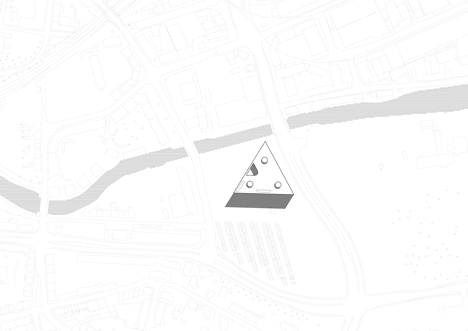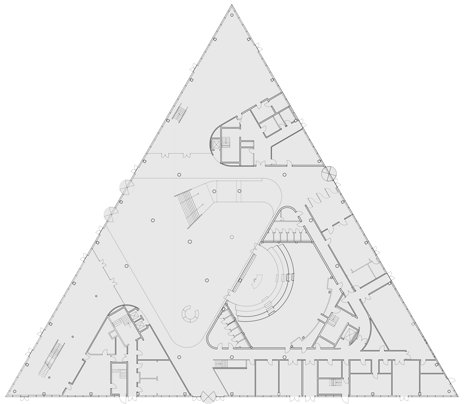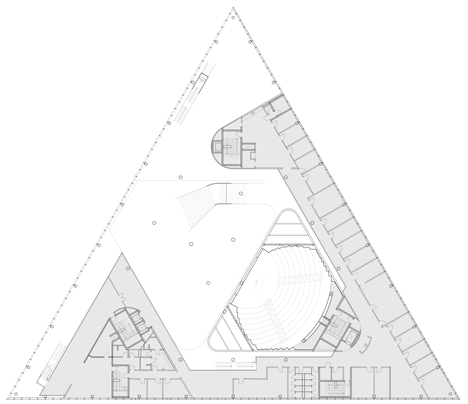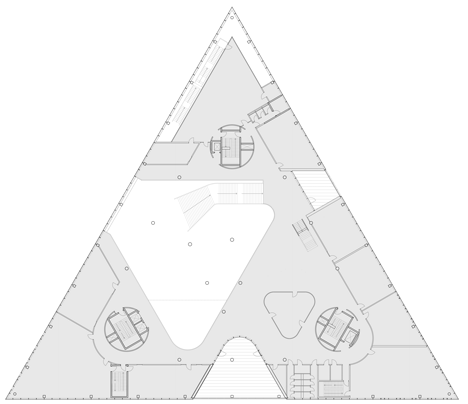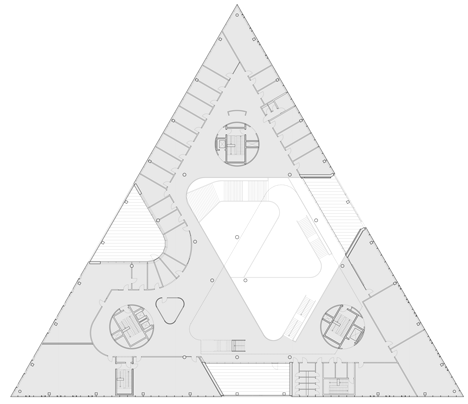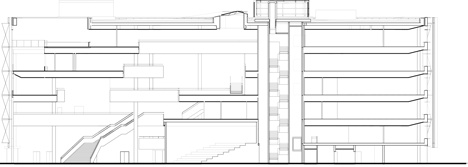Henning Larsen's university building has a facade that moves in response to changing heat and light
Henning Larsen Architects aimed to set a benchmark for green design with this university building in Kolding, Denmark, featuring a climate-responsive kinetic facade and a triangular form (+ slideshow).
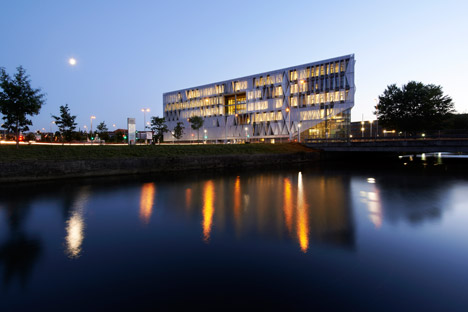
Located just off the harbour in Kolding, the Syddansk Universitet communications and design building has a distinctive isosceles triangular shape that creates a highly visible new presence for the Danish university.
According to the architects, the building is also the first to meet the stringent energy targets of Denmark's 2015 building codes.
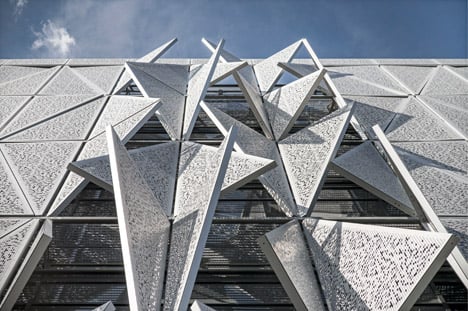
The triangular motif of the facade's perforated metal sunshade, which includes 1,600 panels in total, is a reference to the form of the building.
Sensors monitor heat and light levels around the building, allowing the facade panels to shift from open to half-open to fully open. Even when fully closed, a controlled amount of natural light is able to shine through a custom pattern of round holes, some of which are linked to create amoeba-like openings.
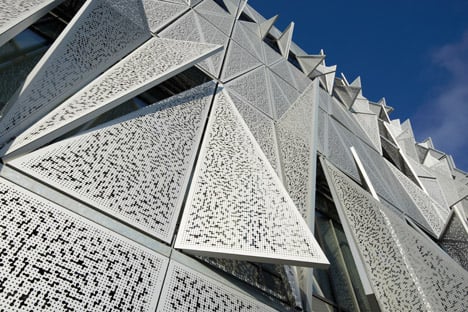
"The triangular shape was generated by the site," said Louis Becker, design director at Henning Larsen, which won the Mies van der Rohe Prize in 2013 for the Harpa Concert Hall in Reykjavik.
"We wanted to leave room for outdoor public space, and to take advantage of the nearby Kolding River."
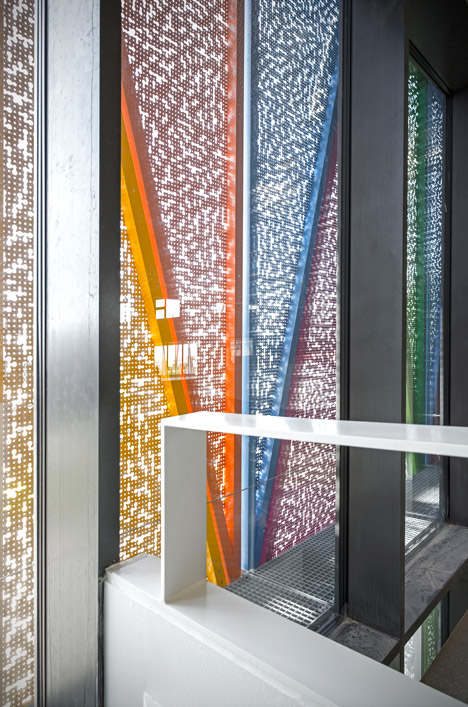
"The rotated position of the building creates a sunny central plaza between the campus and the river, and prevents a direct north-facing facade with no sunlight," he added.
"It turned out that the triangle was a great shape to use for the interior, too."
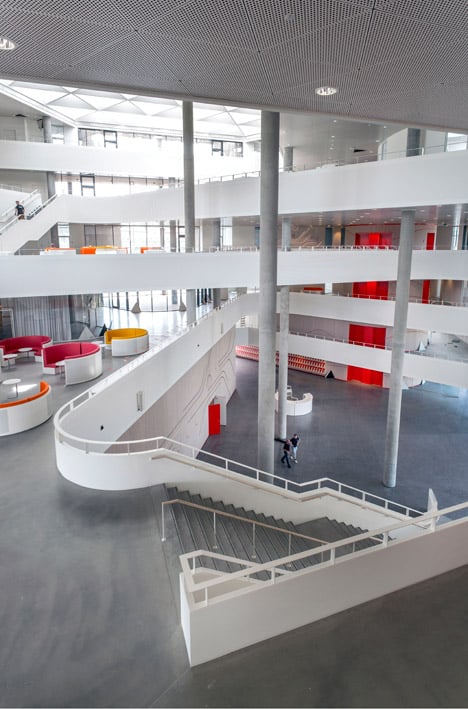
Key spaces inside the 13,700-square-metre building – including the atrium and a lecture theatre – feature triangular plans.
Concrete slabs are left exposed to take advantage of thermal heat gain. The ventilation system is integrated into the ceiling planes, rather than through traditional ducts, which cut both energy and construction costs.
Efficient LED lighting is used throughout, while photovoltaics and solar-heating panels dramatically reduce the amount of energy taken from the grid.
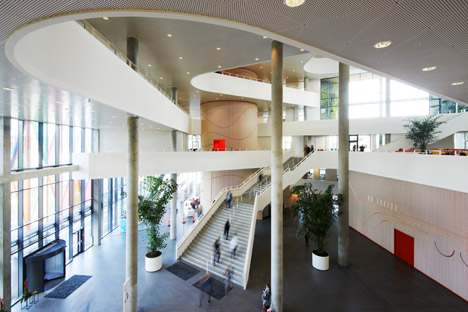
"The energy demand is reduced by 50 per cent compared to similar buildings of the same typology in Denmark through passive design measures and the implementation of efficient and intelligent systems," Becker said.
"It should be noted that the energy requirements in Denmark are among the most stringent in the world."
The skylight-topped central atrium is criss-crossed with stairs and catwalks. At night, when the building is lit from within, it appears far more transparent than it does during the day, creating a visual connection from outside to the inner workings of the school.
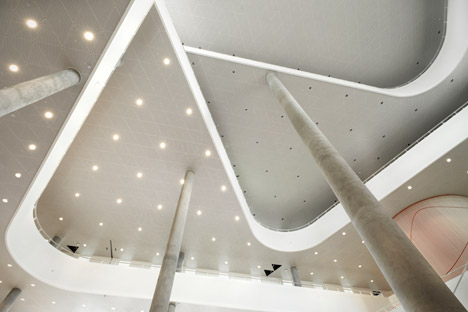
Many of the classrooms and meeting areas have clear glass walls to maximise transparency and are fitted with curtains to provide flexibility and privacy as needed.
Open bench desks line the atrium railings, allowing for informal meetings. Quieter areas are located along the exterior facades. The firm custom designed many of the school's furnishings including triangular tables and semi-enclosed round sofa workstations.
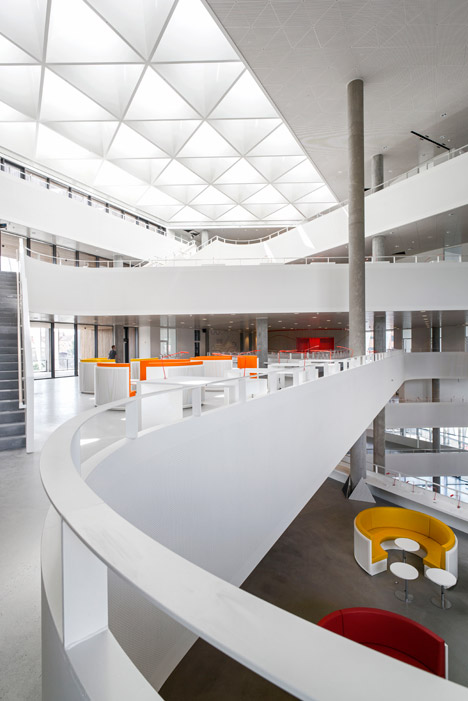
"The university wanted to create an energetic, community-oriented university of the future, and to increase interaction between professors, researchers and students," Becker said.
"Areas for quiet study were necessary too. We placed glass-enclosed offices along the periphery, fronted by more social balconies. Smaller groups can convene in circular pods."
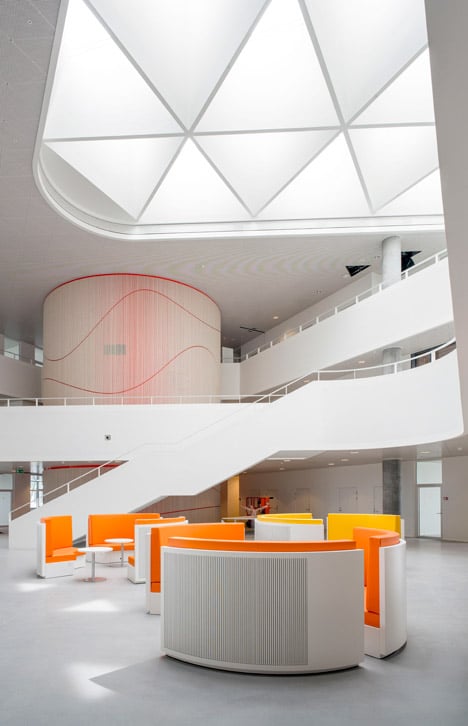
The project includes site-specific art by Tobias Rehberger on the theme of "time" – including clocks, lines and circles embedded in the walls and ceilings of coloured LEDs that change throughout the day. Rehberger also coloured some of the exterior panels, creating a quilt pattern on a portion of the facade.
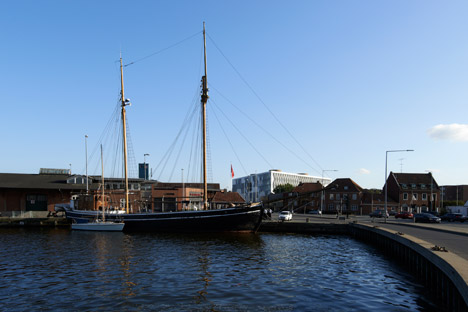
The building houses communications, design, linguistics, and culture courses, which are aligned with the existing International Business College of Kolding and the Kolding Design School.
Photography is by Martin Schubert, unless specified otherwise.
